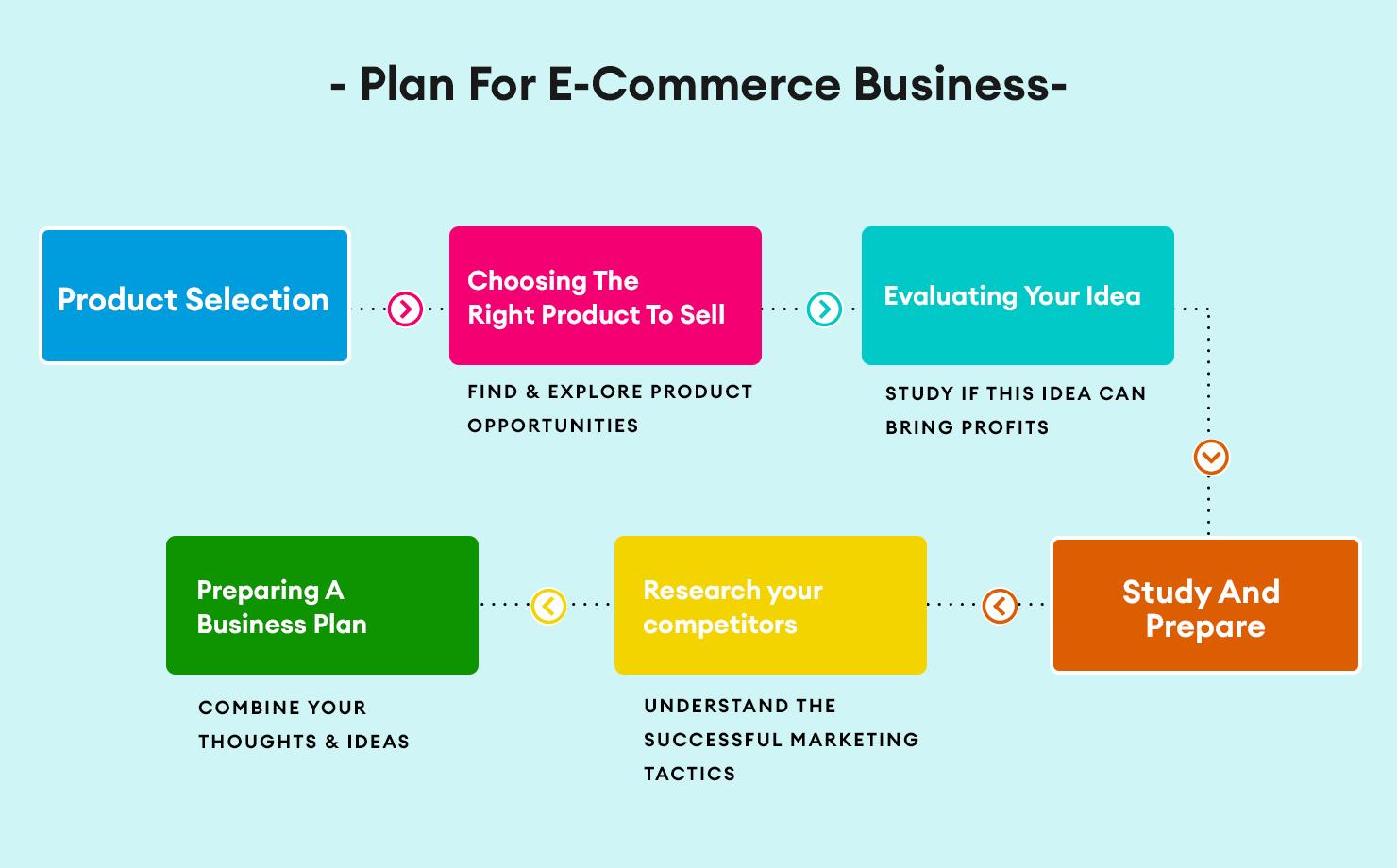In today’s fast-paced digital marketplace, where convenience reigns supreme, the success of online retailers hinges not just on what they sell, but on how efficiently they deliver it. Imagine this: a customer eagerly places an order for that must-have gadget, only to be left in the dark about when it will arrive. Frustrating, right? As competition intensifies and consumer expectations soar, effective ecommerce delivery management has emerged as a vital lifeline for online businesses. in this article, we’ll dive into the art of optimizing order fulfillment, exploring strategies that not only streamline operations but also enhance customer satisfaction. Whether you’re a seasoned retailer or just starting out, understanding the nuances of delivery management can transform your ecommerce game and keep your customers coming back for more. Ready to elevate your order fulfillment process? Let’s get started!
The Importance of Effective Delivery Management in Ecommerce
In the fast-paced world of ecommerce, the efficiency of delivery management can make or break a buisness. With consumer expectations constantly on the rise, online retailers must prioritize excellence in their order fulfillment strategies. Customers now demand not only high-quality products but also rapid and reliable shipping. This is where effective delivery management steps in, transforming a simple transaction into a delightful customer experience.
Effective delivery management involves several key components:
- Real-time tracking: Providing customers with real-time updates on their order status builds trust and enhances satisfaction.
- Streamlined logistics: Optimizing routes and minimizing delays ensures that packages reach customers as quickly as possible.
- Flexible delivery options: Offering various delivery methods, including same-day, next-day, or scheduled delivery, caters to diverse customer needs.
- Robust communication: Keeping customers informed through proactive notifications about their orders fosters a positive relationship.
Moreover,the integration of advanced technology in delivery management can substantially enhance operational efficiency. For instance, utilizing AI and machine learning algorithms allows retailers to predict demand patterns, manage inventory efficiently, and allocate resources effectively. This not only reduces costs but also minimizes delays, creating a seamless shopping experience.
Consider the impact of delivery performance on customer loyalty:
| Delivery Performance | Customer Loyalty Impact |
|---|---|
| On-time Delivery | Increases trust and repeat purchases |
| Flexible Options | Attracts a broader customer base |
| Transparent Tracking | Enhances customer satisfaction |
| Responsive Customer Service | Builds long-term relationships |
the importance of delivery management in ecommerce cannot be overstated.By focusing on effective management practices, retailers not only meet customer expectations but also differentiate themselves in a competitive market. Investing in the right tools and strategies for order fulfillment can lead to higher customer retention rates, increased sales, and ultimately, a thriving online business.
Understanding the Customer Journey: Why Timely Delivery Matters
The customer journey in ecommerce is a multifaceted path that begins long before the shopper clicks “buy” and continues well after they have received their order. One critical aspect of this journey that frequently enough gets overlooked is the importance of timely delivery. It’s not just about getting the product from point A to point B; it’s about creating a seamless experience that fosters trust and encourages repeat business.
When customers make a purchase, they expect their products to arrive on time.Delays can lead to frustration, disappointment, and a loss of faith in the retailer. A punctual delivery service acts as a reflection of the retailer’s reliability and commitment to customer satisfaction. Here are a few reasons why timely delivery is essential:
- First Impressions Count: The first experience a customer has with an order can make or break their perception of your brand.
- Customer Loyalty: Consistent and timely delivery fosters trust,encouraging customers to return for future purchases.
- Competitive Edge: In a crowded market, the ability to deliver faster than competitors can differentiate your brand.
- Positive Reviews: Satisfied customers are more likely to leave glowing reviews, which can boost your brand’s reputation.
Moreover, understanding how delivery impacts customer behavior can inform your ecommerce strategies.As an example, studies have shown that 92% of customers are more likely to shop again from a retailer that offers a great delivery experience. This statistic underscores the need for ecommerce businesses to invest in optimizing their delivery processes. By implementing efficient logistics, retailers can ensure that their products reach the customers’ doorsteps promptly, enhancing the overall shopping experience.
To further illustrate the impact of timely delivery, consider the following table:
| Delivery Timeframe | Customer Satisfaction Score |
|---|---|
| Same Day | 95% |
| Next Day | 88% |
| Standard (3-5 Days) | 75% |
| Delayed (5+ Days) | 40% |
This table clearly demonstrates how delivery speed correlates with customer satisfaction.retailers should strive to achieve faster delivery times without sacrificing quality. By leveraging advanced logistics solutions and technologies, such as real-time tracking and predictive analytics, businesses can not only meet but exceed customer expectations.
Ultimately, optimizing order fulfillment is more than just speed; it’s about creating a holistic experience that respects the customer’s time. When online retailers prioritize timely delivery, they lay the groundwork for building lasting relationships with their customers, ensuring that they are not just a one-time buyer but a loyal advocate for the brand.
Key Metrics to Track for Optimized Order Fulfillment
When it comes to order fulfillment, understanding and tracking the right metrics can make all the difference. By keeping an eye on key performance indicators (KPIs), online retailers can fine-tune their processes, improve customer satisfaction, and ultimately boost their bottom line. Here are some essential metrics to consider:
- Order Accuracy Rate: This measures the percentage of orders correctly fulfilled without errors. A high accuracy rate indicates a well-managed operation, while a low rate can lead to customer dissatisfaction and increased costs due to returns and reshipments.
- Order Cycle Time: This metric tracks the total time taken from the moment an order is placed until it is delivered to the customer. Reducing cycle time can enhance customer experience and encourages repeat purchases.
- shipping Costs: Monitoring shipping expenses is crucial for maintaining profitability. Analyzing shipping costs per order helps identify trends and opportunities to negotiate better rates with carriers.
- Inventory Turnover Rate: This indicates how often inventory is sold and replaced over a specific period. A high turnover rate suggests effective inventory management, while a low rate may signal overstocking or slow-moving products.
- Return Rate: Keeping track of the percentage of products returned by customers is vital for understanding potential issues with product quality or fulfillment processes. A high return rate can indicate problems that need to be addressed quickly.
Utilizing a combination of these metrics can provide a complete overview of your order fulfillment processes. It’s not just about tracking numbers—it’s about leveraging data to identify areas for betterment and implementing strategies that can lead to enhanced efficiency.
| Metric | What it Measures | Why it Matters |
|---|---|---|
| Order Accuracy Rate | Percentage of correctly fulfilled orders | Reflects operational efficiency and customer satisfaction |
| Order Cycle Time | Time from order placement to delivery | Affects customer experience and retention |
| Shipping Costs | Total shipping expenses per order | Impacts overall profitability and pricing strategy |
| Inventory Turnover Rate | frequency of inventory sale and replacement | indicates inventory management effectiveness |
| Return Rate | Percentage of orders returned | Highlights product quality and fulfillment issues |
Incorporating these metrics into your regular business reviews can help you stay ahead of the competition. Analyzing trends over time allows you to make informed decisions, adjust strategies, and align operations with customer expectations. The goal is to create a seamless fulfillment experience that not only meets but exceeds customer demands.

Leveraging Technology for Seamless Delivery Processes
In today’s fast-paced ecommerce landscape, the ability to streamline delivery processes can set a retailer apart from the competition. Utilizing advanced technology not only enhances operational efficiency but also improves customer satisfaction. By integrating various tech solutions, online retailers can ensure that their delivery management is as seamless as possible.
Automated order Processing is a game changer for retailers looking to optimize their delivery cycles.Automation tools can handle order confirmations, track inventory levels, and manage shipping logistics without the need for manual input. This reduces the chances of human error and accelerates the time from order placement to delivery.
Real-time Tracking Systems provide both retailers and customers with visibility into the delivery process. By implementing GPS tracking and status updates, customers can see exactly where their package is at any moment.This openness builds trust and reduces the volume of customer inquiries about order status.
Moreover, utilizing data analytics can help retailers forecast demand, optimize inventory levels, and enhance route planning. By analyzing past sales data and seasonal trends, businesses can better prepare for peak periods and allocate resources more effectively. This not only speeds up the fulfillment process but also minimizes excess inventory costs.
Mobile Applications are another crucial component in creating a frictionless delivery experience. A well-designed app can facilitate easy order placement, offer updates on delivery status, and even allow for direct communication between the customer and the delivery personnel. This convenience can significantly enhance customer loyalty and satisfaction.
| Technology | Benefits |
|---|---|
| Automated Order Processing | Reduces errors, speeds up fulfillment |
| Real-time Tracking | Increases transparency, builds trust |
| Data Analytics | Optimizes inventory and resource allocation |
| Mobile Applications | Enhances customer engagement and loyalty |
Additionally, the integration of Artificial Intelligence (AI) and machine learning can further refine delivery processes. AI can analyze vast amounts of data to predict delivery times more accurately and suggest optimal routes for drivers.This not only enhances efficiency but also reduces operational costs.
By embracing these technological advancements, online retailers can foster a seamless delivery process that not only meets but exceeds customer expectations. The goal is to create a system where fulfillment is not just a logistical necessity, but a powerful competitive advantage.
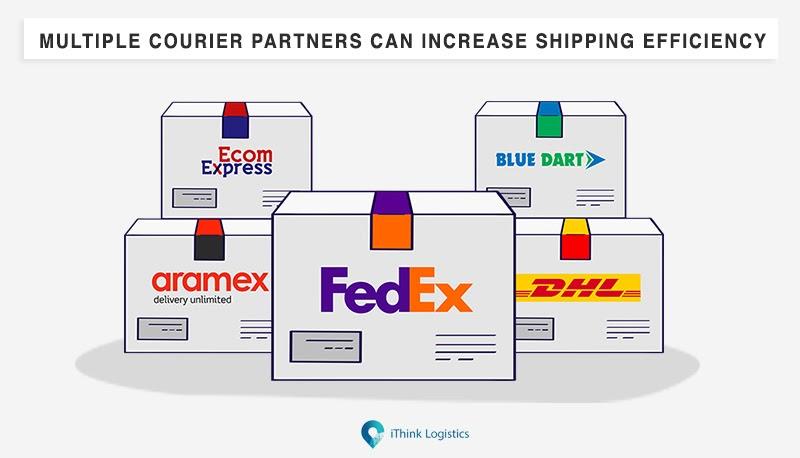
Choosing the Right Shipping Partners to Enhance Reliability
Selecting the right shipping partners is a pivotal part of your ecommerce strategy. The logistics landscape is diverse, and your choice can either enhance your delivery reliability or lead to potential pitfalls. When considering shipping partners, it’s essential to assess various factors that contribute to a seamless order fulfillment experience.
Start by evaluating the performance history of potential shipping partners. Look for those with a proven track record of timely deliveries and minimal issues. You can gauge this through:
- Customer reviews and testimonials
- delivery timeframes and accuracy statistics
- Industry recognition and awards
Another crucial element is the range of services offered by your shipping partner. A partner who provides multiple shipping options can cater to different customer needs effectively.Consider whether they offer:
- Same-day delivery
- Next-day shipping
- International shipping capabilities
- Flexible tracking solutions
Additionally, think about the technology that your shipping partners use. An efficient shipping partner will leverage advanced technology for order tracking, inventory management, and real-time updates. Explore partners that integrate seamlessly with your existing ecommerce platform to streamline operations. This includes:
- Real-time tracking tools
- Automated shipping label generation
- API integrations for smooth data flow
Consider the cost-effectiveness as well. while cheaper rates may be appealing,they shouldn’t come at the expense of reliability. It’s vital to strike a balance between cost and service quality. Create a comparison grid to easily evaluate different partners, focusing on:
| Shipping Partner | Delivery Speed | cost | Customer Rating |
|---|---|---|---|
| FastShip | 1-2 days | $$ | 4.8/5 |
| TrackAndGo | 2-4 days | $ | 4.5/5 |
| GlobalDelivery | 3-5 days | $$$ | 4.7/5 |
don’t underestimate the importance of customer support provided by your shipping partner. Efficient customer service can resolve delivery issues quickly and maintain customer satisfaction. Look for partners who offer:
- 24/7 support availability
- Responsive communication channels
- dedicated account management
Choosing the right shipping partner is not just about logistics; it’s about creating a dependable experience for your customers that builds trust and encourages repeat business. Make informed decisions, and watch your ecommerce fulfillment process transform into a competitive advantage.

Implementing Real-Time Tracking for Improved Customer Satisfaction
In the fast-paced world of ecommerce, customers have come to expect transparency and real-time updates regarding their orders. By implementing real-time tracking systems, online retailers can significantly enhance customer satisfaction, providing a seamless experience from purchase to delivery. This technology not only keeps customers informed but also fosters trust in the brand.
Imagine placing an order and receiving instant notifications about its journey. With real-time tracking, customers can:
- Monitor their shipment: from dispatch to delivery, customers have access to live updates on their order status.
- Manage expectations: Knowing estimated delivery times helps customers plan their schedules better.
- Reduce anxiety: Being able to track their orders alleviates concerns about lost packages or delays.
Moreover, real-time tracking not only benefits the customer but also provides valuable data for retailers. By analyzing tracking facts, businesses can:
- Identify bottlenecks: Understanding where delays occur allows retailers to streamline their logistics.
- Enhance communication: By proactively addressing issues based on tracking data, brands can communicate effectively with customers.
- Improve delivery performance: Utilizing data analytics can lead to optimized routes and faster deliveries, boosting overall efficiency.
To illustrate the impact of real-time tracking, consider the following table showcasing customer feedback before and after its implementation:
| Metric | Before Tracking | After Tracking |
|---|---|---|
| Customer Satisfaction Score | 72% | 88% |
| Inquiries about Order Status | 20/week | 5/week |
| Repeat Purchase Rate | 30% | 45% |
With these improvements, it’s clear that investing in real-time tracking can yield high returns. Not only does it enhance customer experience, but it also drives loyalty and repeat purchases, critical elements for any successful ecommerce business. By embracing this technology, online retailers can set themselves apart from the competition and create a positive, lasting impression on their customers.
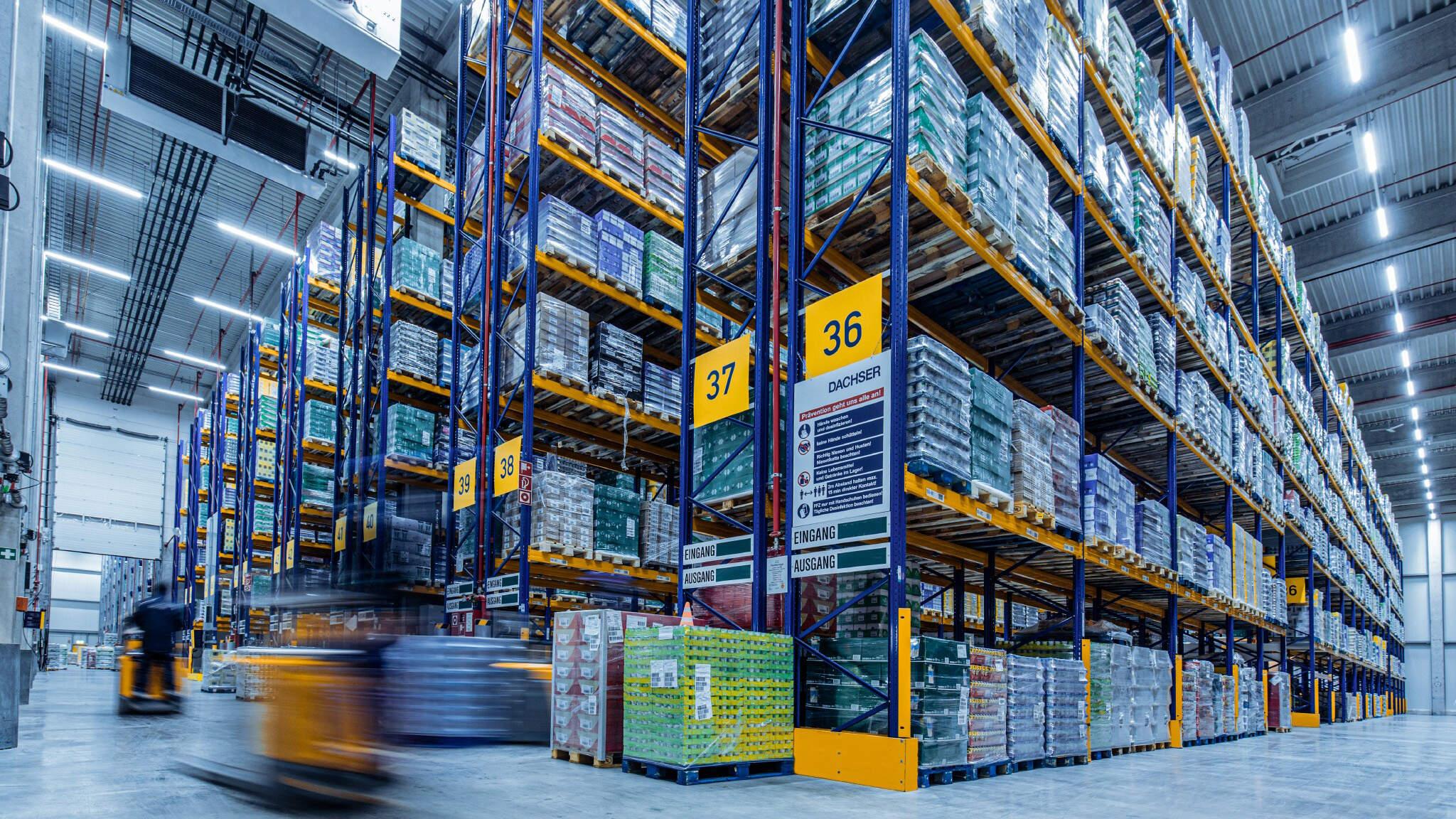
Streamlining Warehousing and inventory Management
Efficient warehousing and inventory management can significantly impact the success of an ecommerce business. To enhance order fulfillment, online retailers must prioritize strategies that minimize delays and reduce costs while maximizing customer satisfaction. here are some essential approaches to streamline these processes:
- Automated Inventory Tracking: Implementing systems that automatically update inventory levels can prevent overselling and stockouts. Technologies like RFID and barcode scanning simplify this task, ensuring accuracy in real-time.
- Centralized Inventory Management: Managing all inventory data from a single platform helps retailers maintain visibility across multiple sales channels. This integration not only enhances decision-making but also improves customer service.
- Dynamic slotting: By analyzing sales data, businesses can reposition high-demand items closer to packing and shipping areas. This reduces the time warehouse staff spends locating products, leading to faster order processing.
- Streamlined Picking Processes: Utilizing methods such as batch picking or wave picking can optimize order fulfillment. These techniques allow staff to pick multiple orders simultaneously, increasing efficiency and reducing labor costs.
Moreover, embracing technology can further enhance warehouse operations. Consider integrating warehouse management systems (WMS) that provide real-time insights into inventory levels and order statuses. These systems can automate routine tasks and generate reports, helping retailers make informed decisions quickly.
Another crucial factor is the layout of the warehouse. A well-organized warehouse can dramatically speed up the picking and packing processes. Implementing a zone picking strategy, where similar items are stored together, can reduce travel time for staff, leading to quicker order fulfillment.
| Strategy | Benefit |
|---|---|
| Automated Inventory Tracking | Reduces errors and stock discrepancies |
| Dynamic Slotting | Speeds up order picking times |
| Real-Time Data Analysis | Enhances inventory decision-making |
| Efficient Warehouse Layout | Minimizes staff movement and maximizes productivity |
Ultimately, the key to successful ecommerce delivery management lies in a proactive approach to warehousing and inventory control. By implementing these strategies,online retailers can improve not only their operational efficiency but also their overall customer experience,paving the way for increased loyalty and repeat business.

adopting Flexible Delivery Options to Meet Diverse Customer Needs
In today’s fast-paced retail habitat, customers expect more than just quality products—they want flexibility in how those products are delivered. This shift in consumer behavior has pushed online retailers to rethink their delivery strategies and adopt solutions that cater to diverse preferences. By offering a variety of delivery options, businesses can not only meet customer expectations but also enhance satisfaction and loyalty.
One effective approach is to implement a multi-modal delivery system. This means providing customers with choices that fit their individual lifestyles. Consider including options such as:
- Same-day delivery: Ideal for time-sensitive purchases.
- Scheduled deliveries: allowing customers to choose a specific day and time.
- Click-and-collect: Enabling customers to order online and pick up in-store.
- Locker delivery: Offering secure locations for package pickup at their convenience.
Furthermore, integrating advanced tracking and communication tools can significantly enhance the customer experience. By providing real-time updates on delivery status, customers can keep tabs on their orders without feeling anxious. An effective tracking system can also allow for:
- Delivery re-scheduling: If a customer can’t be home,they should easily modify their delivery time.
- Estimated delivery windows: Giving customers an accurate timeframe for when to expect their package.
To illustrate the impact of flexible delivery options, consider the following table showcasing customer preferences:
| Delivery Option | Customer Preference (%) |
|---|---|
| same-day delivery | 35% |
| Scheduled delivery | 25% |
| click-and-collect | 20% |
| Locker delivery | 15% |
| Standard delivery | 5% |
ultimately, adopting flexible delivery options is not just about convenience; it’s about creating a tailored experience that resonates with customers’ lifestyles. Online retailers who prioritize adaptability in their delivery methods stand to gain a significant competitive edge in the eCommerce landscape. By evolving their delivery strategies,they can turn first-time buyers into repeat customers,ensuring long-term success.
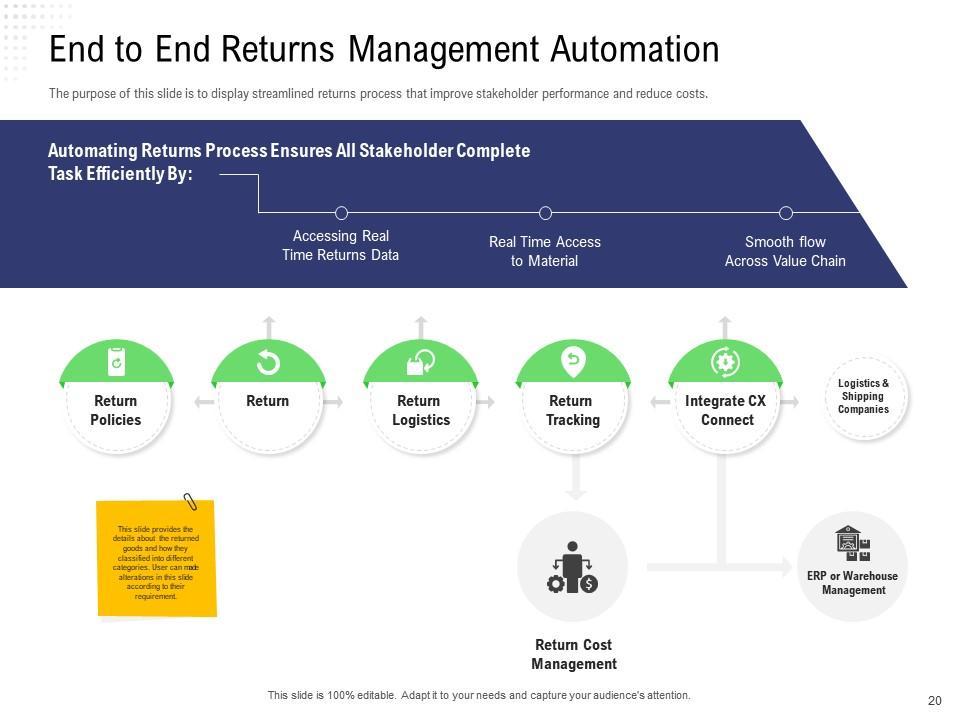
Creating a Proactive Returns Management Strategy
To thrive in the competitive eCommerce landscape, it’s essential to have a well-thought-out returns management strategy. A proactive approach not only enhances customer satisfaction but also reduces operational costs and improves overall efficiency. Here are some key components to consider:
- Clear Return Policies: Ensure your return policies are straightforward and easily accessible. Clear guidelines help set customer expectations and can significantly reduce misunderstandings.
- Streamlined Processes: Automate return processes where possible.Utilizing technology can definitely help you manage returns faster and with fewer errors, ultimately leading to happier customers.
- Data Analysis: Regularly analyze return data to identify trends. Understanding why products are returned can lead to better decision-making regarding inventory and product quality.
- Customer communication: Maintain open lines of communication during the returns process.Keeping customers informed can reduce frustration and increase the likelihood of repeat business.
Implementing a returns management strategy also involves understanding the financial implications. Consider the following table to see how various factors impact your bottom line:
| Factor | Impact on Costs | Potential Solutions |
|---|---|---|
| High Return Rate | Increased shipping and restocking costs | Improve product descriptions and sizing guides |
| Poor Packaging | Damage during transit | Invest in quality packaging materials |
| Delayed Processing | Lower customer satisfaction | Implement faster return processing systems |
Lastly, emphasize the importance of building a culture of returns management within your team. Educating your staff about the returns process and its importance can lead to improved performance across the board. Encourage team members to share insights and feedback on the returns process, fostering a sense of ownership that can drive continuous improvement.
By embracing a proactive returns management strategy, you position your eCommerce business for long-term success.Customers appreciate hassle-free return experiences, and when they know they can return items easily, they’re more likely to make purchases with confidence. Invest in your returns management today, and watch your customer satisfaction and loyalty soar!
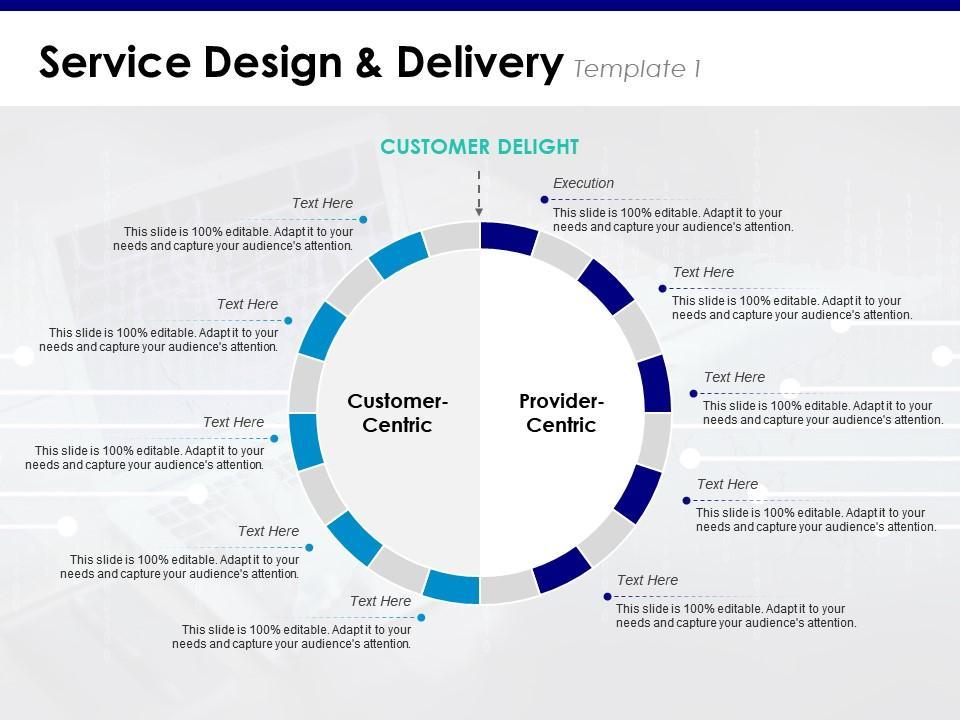
Building a Customer-Centric Delivery Experience
Understanding Customer Expectations
in today’s fast-paced ecommerce landscape,customers have become accustomed to speedy and reliable delivery. They expect transparency,convenience,and flexibility in their order fulfillment experience. This means online retailers must go beyond just delivering products; they need to create an experience that resonates with their audience. whether it’s offering same-day delivery or allowing customers to choose their preferred delivery time, understanding what your customers want is key.
Personalization at Every Touchpoint
Personalizing the delivery experience can significantly enhance customer satisfaction.This can be achieved by:
- Sending tailored notifications about delivery status.
- Allowing customers to select delivery preferences based on their lifestyles.
- Implementing loyalty programs that reward timely pickups or feedback on delivery experiences.
By making the delivery process personal, you’re not just fulfilling an order; you’re building a relationship that can lead to repeat business.
Leveraging Technology for Transparency
Utilizing technology can transform the delivery experience into a seamless journey. Real-time tracking systems provide customers with updates and estimated delivery times, fostering a sense of control.Consider implementing:
- Mobile apps for order tracking and notifications.
- AI chatbots for instant support regarding delivery inquiries.
- Geolocation services to allow customers to see the exact location of their delivery in real time.
With these technologies, customers can stay informed, which reduces anxiety and builds trust in your brand.
Creating Flexibility in Delivery Options
flexibility is paramount in today’s delivery options. Customers appreciate having choices. Here’s how you can cater to varying needs:
| Delivery option | Description |
|---|---|
| same-Day delivery | fastest option for urgent needs. |
| Scheduled Delivery | Allows customers to choose a delivery time. |
| In-Store Pickup | Convenient for local customers who want to save on shipping. |
By providing an array of options, you empower customers to choose what works best for their schedules and lifestyles.
Gathering Feedback for Continuous Improvement
to build a truly customer-centric delivery experience, you must actively seek and act on customer feedback. Implementing post-delivery surveys can provide insights into what works and what doesn’t.Encourage your customers to share their thoughts on:
- delivery speed and reliability.
- Communication throughout the delivery process.
- Overall satisfaction with the delivery experience.
By continuously refining your approach based on customer input, you’ll not only enhance their experience but also foster loyalty and advocacy towards your brand.

Harnessing Data Analytics to Drive Continuous improvement
in today’s fast-paced ecommerce environment, leveraging data analytics is paramount for online retailers seeking to enhance their order fulfillment processes.By transforming raw data into actionable insights,businesses can pinpoint inefficiencies,anticipate customer demands,and improve overall service delivery. With a robust data-driven approach, retailers can ensure that each stage of the supply chain operates seamlessly.
One of the key benefits of utilizing data analytics is the ability to measure performance metrics effectively. Retailers can track a variety of indicators such as:
- Order processing times: Understanding how long it takes from order placement to dispatch helps identify bottlenecks.
- delivery success rates: Assessing how manny orders are delivered on time can highlight reliability issues.
- Inventory turnover: Analyzing how quickly stock moves can inform purchasing decisions and prevent stockouts.
By aggregating and analyzing these metrics, retailers can develop a comprehensive view of their operations. advanced analytics tools can segment this data,revealing patterns that might or else go unnoticed. As an example, identifying peak shopping times allows for better staffing and inventory management, ensuring that the fulfillment center is always prepared to meet customer expectations.
Another crucial aspect of data analytics is the ability to drive predictive modeling. By employing machine learning algorithms, retailers can forecast demand trends based on past data, seasonal patterns, and even external factors such as economic indicators. This foresight enables businesses to:
- optimize stock levels: Reducing excess inventory and minimizing stockouts.
- Enhance delivery scheduling: Ensuring that logistics are aligned with anticipated demand.
- Customize marketing efforts: Targeting specific customer segments with tailored promotions.
Integrating customer feedback into the data analytics process also fuels continuous improvement.Collecting reviews, ratings, and customer service inquiries provides valuable insights into the customer experience. Retailers can utilize sentiment analysis tools to gauge customer satisfaction and make necessary adjustments to their delivery processes.
Moreover, building a culture of data-driven decision-making within the organization is vital. encouraging teams to rely on data rather than gut feelings empowers them to make informed choices that align with business goals.Training staff on data analytics tools can foster a more proactive approach, driving innovation and efficiency across the board.
| Data Point | Current Status | Target Status |
|---|---|---|
| Order Processing Time | 3 days | 1 day |
| Delivery Success Rate | 85% | 95% |
| Inventory Turnover | 5 times/year | 10 times/year |
harnessing data analytics is not just about collecting numbers; it’s about transforming that data into a strategic advantage. By constantly analyzing performance and customer feedback, ecommerce retailers can remain agile, continuously refine their operations, and ultimately create a more satisfying shopping experience for their customers.
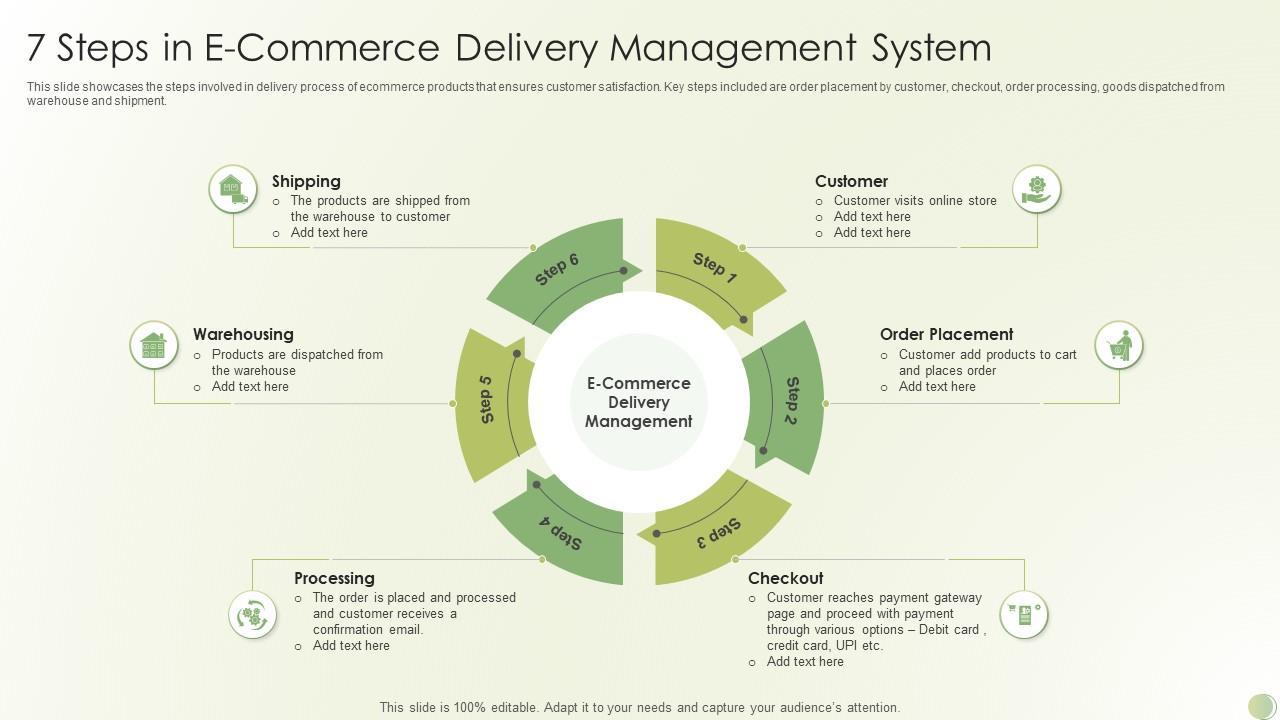
Future Trends in Ecommerce Delivery Management That You Cant Ignore
As the ecommerce landscape continues to evolve, so do the expectations of consumers regarding delivery management. Online shoppers crave speed, convenience, and transparency, which means retailers must stay ahead of the curve to remain competitive. Several emerging trends in delivery management are set to redefine the way businesses approach order fulfillment, and embracing these changes is essential for future success.
1. Hyperlocal Delivery Solutions
One of the most significant shifts in ecommerce delivery is the rise of hyperlocal solutions. Retailers are increasingly partnering with local couriers to offer same-day or even one-hour delivery. This trend not only enhances customer satisfaction but also allows businesses to optimize inventory management by sourcing products from nearby warehouses or stores.
2. Automated Delivery Systems
Automation is transforming logistics and delivery management. From automated warehouses to drones and autonomous vehicles, the integration of technology is streamlining the delivery process and reducing costs. By investing in automated delivery systems, retailers can improve delivery speed and accuracy while minimizing human error.
3. Enhanced Tracking and Communication
Today’s consumers expect real-time updates on their orders. Advanced tracking technology enables retailers to provide customers with detailed information about their shipments, including estimated delivery times and immediate notifications of any delays. Furthermore, providing a seamless communication channel fosters trust and transparency, allowing customers to feel in control of their purchases.
4. Sustainable Delivery Practices
As environmental concerns gain traction,eco-friendly delivery practices are becoming a necessity rather than a choice. Retailers are exploring options such as electric vehicles, carbon-neutral shipping, and sustainable packaging solutions. Adopting these practices not only appeals to eco-conscious consumers but also positions brands as responsible and forward-thinking.
5. Personalization in Delivery Options
Personalization extends beyond product recommendations; it also plays a crucial role in delivery management. By offering customers customizable delivery options—such as preferred delivery windows, pickup locations, or alternative delivery methods—retailers can enhance the overall shopping experience and increase customer loyalty.
| Trend | Benefits |
|---|---|
| Hyperlocal Delivery | Increased customer satisfaction, faster delivery times |
| Automated systems | Reduced costs, improved accuracy |
| Enhanced Tracking | Greater transparency, increased trust |
| Sustainable Practices | eco-friendly branding, appeal to conscious consumers |
| Personalized Delivery | Improved customer experience, enhanced loyalty |
To thrive in the competitive world of ecommerce, retailers must not only adopt these trends but also continuously adapt their delivery strategies to meet the changing needs of consumers. By focusing on innovation and customer-centric delivery management, businesses can optimize their order fulfillment processes and create a lasting impact in the marketplace.
Frequently Asked Questions (FAQ)
Q&A: Ecommerce Delivery Management: Optimizing Order Fulfillment for Online Retailers
Q1: What is ecommerce delivery management, and why is it important for online retailers?
A1: Ecommerce delivery management refers to the strategies and processes that online retailers use to ensure that products are delivered efficiently and effectively to customers. it’s crucial because timely delivery can make or break a customer’s shopping experience. In today’s competitive market, where consumers expect quick and reliable service, optimizing delivery management can enhance customer satisfaction, boost repeat purchases, and ultimately drive sales.
Q2: How can retailers optimize their order fulfillment processes?
A2: There are several ways retailers can optimize order fulfillment. First, they can improve inventory management to ensure that stock levels are accurately tracked and that popular items are readily available. Implementing automated systems can streamline order processing and reduce human error. Additionally,retailers can partner with multiple carriers to offer various shipping options,ensuring that customers can choose what works best for them. Lastly, utilizing data analytics helps identify trends and peak times, allowing for proactive adjustments in fulfillment strategies.
Q3: what role does technology play in delivery management?
A3: Technology is a game changer in delivery management! It enables real-time tracking, automatic notifications, and streamlined communication between the retailer, carrier, and customer. Tools like warehouse management systems (WMS), order management systems (OMS), and advanced logistics software can optimize routes, reduce delivery times, and enhance the overall efficiency of the supply chain. By leveraging technology, retailers can provide a seamless shopping experience that meets customer expectations.
Q4: can you share some tips for handling returns efficiently?
A4: absolutely! Handling returns efficiently is just as critically important as managing deliveries.First, create a clear and easy return policy—customers appreciate transparency. Offering prepaid return labels can also ease the process. Implementing a hassle-free return experience not only boosts customer satisfaction but can also encourage loyalty. Lastly, utilize return data to analyze trends and identify issues. This insight can definitely help you improve product offerings and reduce future returns.
Q5: How can retailers enhance customer communication regarding deliveries?
A5: Clear communication is key! Retailers should provide tracking information right from the moment an order is placed. Automated email or SMS updates at each stage of the delivery process can keep customers informed. It’s also beneficial to have customer service channels readily available for any inquiries. By fostering open lines of communication, retailers can build trust and improve the overall shopping experience.
Q6: What are the potential challenges retailers face in delivery management, and how can they overcome them?
A6: Some common challenges include managing shipping costs, navigating logistics during peak seasons, and dealing with unexpected delays. To overcome these issues, retailers should diversify their shipping options and negotiate better rates with carriers. Investing in robust logistics planning can help tackle peak demand efficiently. Additionally, having a contingency plan in place for potential disruptions will minimize stress and keep operations running smoothly.
Q7: Why should retailers invest in optimizing their delivery management processes?
A7: Investing in delivery management pays off in spades! By optimizing these processes, retailers can improve customer satisfaction, reduce operational costs, and increase delivery speed. Happy customers are more likely to return, recommend your store to others, and leave positive reviews. In a world where online shopping is booming, making delivery management a priority can set your business apart from the competition and drive long-term growth.
Closing Thought: Embracing efficient ecommerce delivery management isn’t just a smart business move; it’s an investment in your customers’ happiness. The better their experience, the more they’ll love shopping with you!
In Retrospect
As we wrap up our exploration of ecommerce delivery management, it’s clear that optimizing order fulfillment is not just a logistical necessity; it’s a game changer for online retailers. In a world where customer expectations are higher than ever, the ability to deliver on promises can set you apart from the competition. By investing in streamlined processes, innovative technologies, and customer-centric strategies, you can turn your delivery management into a powerful asset.
Remember, every package you send out is an prospect to build trust and loyalty with your customers.so, whether you’re a seasoned retailer or just starting out, take a moment to assess your current fulfillment strategies. Are they working for you? Are they meeting your customers’ needs? If not, now is the time to make a change.
Embrace the evolving landscape of ecommerce delivery,and watch your business thrive. After all, happy customers are repeat customers, and in the world of online retail, that’s worth its weight in gold. Let’s not just fulfill orders; let’s exceed expectations and deliver delight. Your future customers will thank you for it!

